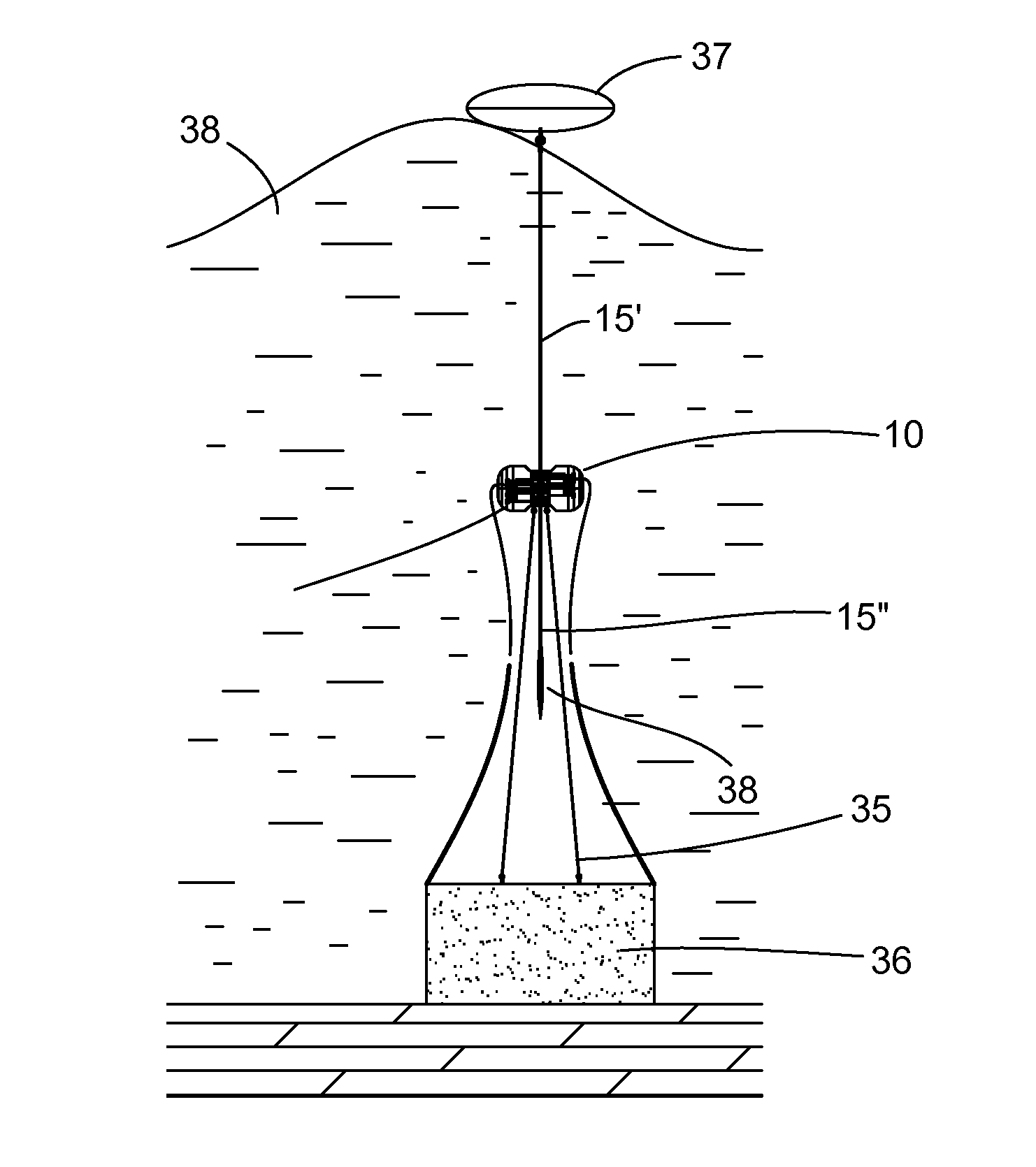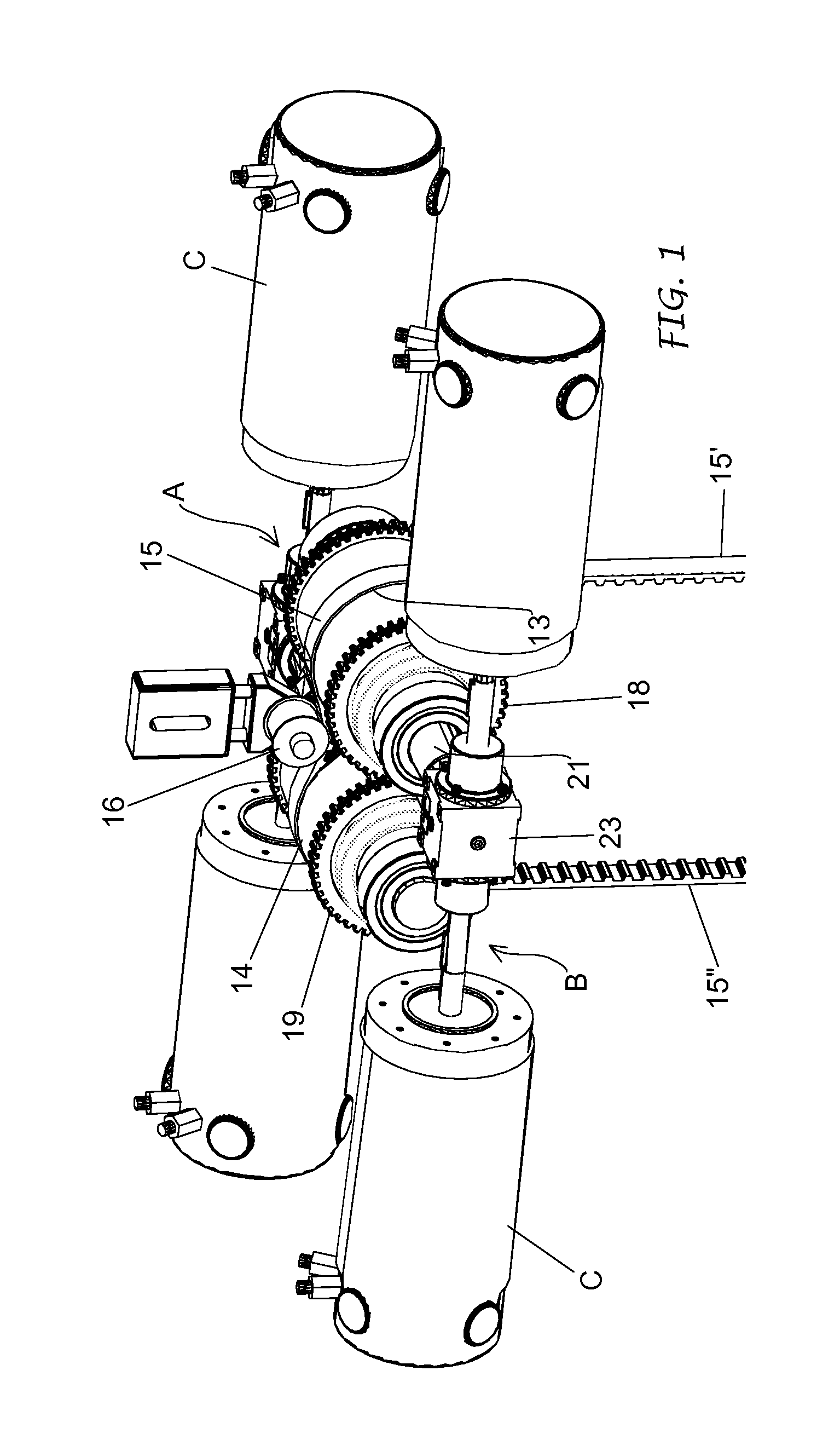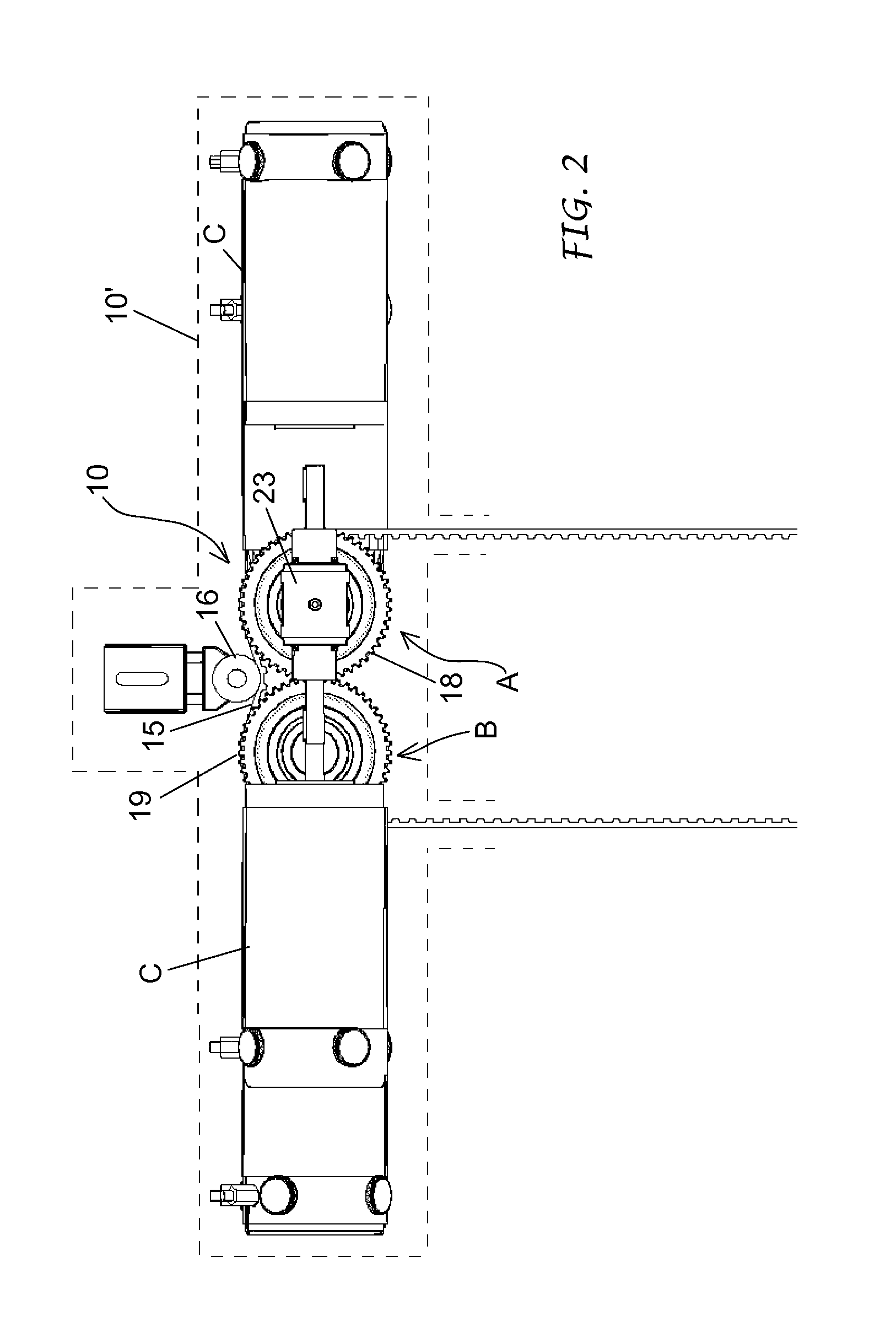Apparatus for producing electric or mechanical energy from wave motion
a technology of electric or mechanical energy and apparatus, which is applied in the direction of sea energy generation, friction gearings, engine fuctions, etc., can solve the problems of limited installation and performance, only 50% of the development or capacity of the exploitation of wave motion, and problems relating at least to their efficiency, etc., to achieve low economic investment, high efficiency, and ductile and versatile
- Summary
- Abstract
- Description
- Claims
- Application Information
AI Technical Summary
Benefits of technology
Problems solved by technology
Method used
Image
Examples
Embodiment Construction
[0033]The apparatus of the invention represented in FIGS. 1-5 and indicated globally by 10 basically comprises two operating units A and B, parallel side by side, designed for a production of electric energy, each one by means of one or more power generators C, starting from an alternating linear motion or, more in particular, from the movement of the surface of the water in oceans, seas and lakes.
[0034]The apparatus comprises two main or driving shafts 11, 12, one for each operating unit A and B, parallel and supported in rotation on respective bearings 11′, 12′ carried by a crankcase or casing 10′.
[0035]In the example represented, a first operating unit A is fixed to the main shaft 11, and consequently rotating with it, a driving wheel 13 positioned in correspondence, that is coplanar, to a corresponding driving wheel 14 fixed to the main shaft 12 of the other operating unit B. The two driving wheels 13, 14 can be made up of gear wheels or driving pulleys, but they are however rad...
PUM
 Login to View More
Login to View More Abstract
Description
Claims
Application Information
 Login to View More
Login to View More - R&D
- Intellectual Property
- Life Sciences
- Materials
- Tech Scout
- Unparalleled Data Quality
- Higher Quality Content
- 60% Fewer Hallucinations
Browse by: Latest US Patents, China's latest patents, Technical Efficacy Thesaurus, Application Domain, Technology Topic, Popular Technical Reports.
© 2025 PatSnap. All rights reserved.Legal|Privacy policy|Modern Slavery Act Transparency Statement|Sitemap|About US| Contact US: help@patsnap.com



